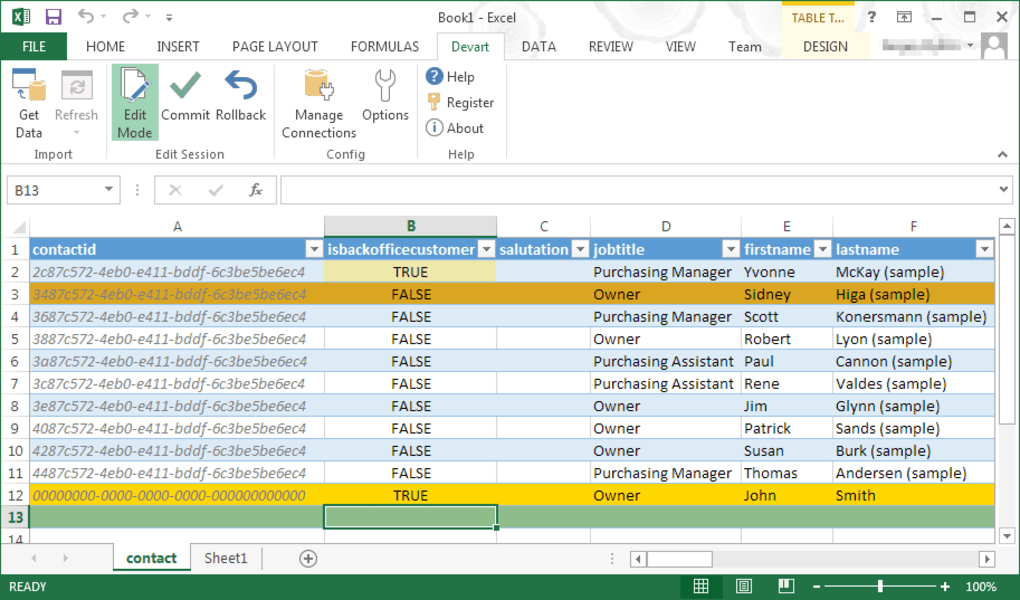Microsoft Excel Add Ons For Mac
An Excel add-in allows you to extend Excel application functionality across multiple platforms including Windows, Mac, iPad, and in a browser. Use Excel add-ins within a workbook to: Interact with Excel objects, read and write Excel data. Extend functionality using web based task pane or content pane. Add-ins are coming to Microsoft Office for Mac. Office for Mac's forthcoming add-in support is one of a number of new add-in features coming to Microsoft's productivity suite. Today's Best Tech Deals. Picked by Macworld's Editors. Save big on Apple Watch Series 4 and MacBook Pros ahead of next week’s event. Mar 19, 2020 StatPlus:mac LE is not a VBA add-in for Excel, but it does provide features comparable to Analysis ToolPak. Mike Middleton, www.TreePlan.com. Unlike COM add-ins, Office Add-ins don't involve code that runs on the user's device or in the Office client. For an Office Add-in, the host application, for example Excel, reads the add-in manifest and hooks up the add-in’s custom ribbon buttons and menu commands in the UI. Managing add-ins can involve enabling or disabling an add-in, adding or removing an add-in, and making an add-in active or inactive. Word, Excel, Access, and PowerPoint Click the Microsoft Office Button, click Word Options, and then click Add-Ins. With Excel add-ins, you can use familiar web technologies such as HTML, CSS, and JavaScript to build a solution that can run in Excel across multiple platforms, including on Windows, Mac, iPad, and in a web browser. Learn how to build, test, debug, and publish Excel add-ins.
Microsoft update tool mac torrent. This can be used to start the update process for Microsoft applications produced for Mac, such as Office.
-->With Excel add-ins, you can use familiar web technologies such as HTML, CSS, and JavaScript to build a solution that can run in Excel across multiple platforms, including on Windows, Mac, iPad, and in a web browser. Learn how to build, test, debug, and publish Excel add-ins.
Overview
Getting started
Build your first Excel add-in in under 5 minutes, then explore the API with Script Lab.
Excel JavaScript API
Custom functions
Testing and debugging
Publishing
Learn about Office Add-ins
All Office Add-ins are built upon the Office Add-ins platform. They share a common framework through which certain capabilities can be implemented. Explore the following articles for information that's relevant to building any Office Add-in.

Fundamental concepts
Learn basic concepts about Office Add-ins.
Advanced concepts
Explore key aspects of Office Add-ins development.
Note: See the Core concepts section of this documentation for the full set of articles that apply to all types of Office Add-ins.
Microsoft Excel Add In Downloads
Resources
Use the following resources to explore the APIs, ask questions, report issues, or request features related to the Office Add-ins platform or JavaScript API. For information about additional resources, see Office Add-ins additional resources.
-->Because add-ins are developed using HTML and JavaScript, they are designed to work across platforms, but there might be subtle differences in how different browsers render the HTML. This article describes how to debug add-ins running on a Mac.
Debugging with Safari Web Inspector on a Mac
If you have add-in that shows UI in a task pane or in a content add-in, you can debug an Office Add-in using Safari Web Inspector.

To be able to debug Office Add-ins on Mac, you must have Mac OS High Sierra AND Mac Office Version: 16.9.1 (Build 18012504) or later. If you don't have an Office Mac build, you can get one by joining the Office 365 Developer Program.
To start, open a terminal and set the OfficeWebAddinDeveloperExtras property for the relevant Office application as follows:
Microsoft word 2017 mac normal.dotm. Dec 06, 2017 Torsten300 Created on December 3, 2017 Mac/Apple: normal.dotm - Word cannot open the global template Hi, I am experiencing issues with Word on my Mac. Click the Microsoft Office Button, and then click Open. Click Templates, and then double-click the Normal.dotm file to open it. Click Templates next to File name. If no templates are listed in the Open dialog box, click the arrow next to the Files of type box, and then click All Word Templates.
defaults write com.microsoft.Word OfficeWebAddinDeveloperExtras -bool truedefaults write com.microsoft.Excel OfficeWebAddinDeveloperExtras -bool truedefaults write com.microsoft.Powerpoint OfficeWebAddinDeveloperExtras -bool truedefaults write com.microsoft.Outlook OfficeWebAddinDeveloperExtras -bool true
Then, open the Office application and sideload your add-in. Right-click the add-in and you should see an Inspect Element option in the context menu. Select that option and it will pop the Inspector, where you can set breakpoints and debug your add-in.
Note
If you're trying to use the inspector and the dialog flickers, update Office to the latest version. If that doesn't resolve the flickering, try the following workaround:
- Reduce the size of the dialog.
- Choose Inspect Element, which opens in a new window.
- Resize the dialog to its original size.
- Use the inspector as required.
Clearing the Office application's cache on a Mac
Add Ons For Microsoft Photos
Add-ins are often cached in Office for Mac, for performance reasons. Normally, the cache is cleared by reloading the add-in. If more than one add-in exists in the same document, the process of automatically clearing the cache on reload might not be reliable.
Microsoft Excel Add Ins Mac
You can clear the cache by using the personality menu of any task pane add-in.
Choose the personality menu. Then choose Clear Web Cache.
Note
You must run macOS version 10.13.6 or later to see the personality menu.
You can also clear the cache manually by deleting the contents of the ~/Library/Containers/com.Microsoft.OsfWebHost/Data/ folder.
Note
If that folder doesn't exist, check for the following folders and if found, delete the contents of the folder:
~/Library/Containers/com.microsoft.{host}/Data/Library/Caches/where{host}is the Office host (e.g.,Excel)~/Library/Containers/com.microsoft.{host}/Data/Library/Application Support/Microsoft/Office/16.0/Wef/where{host}is the Office host (e.g.,Excel)com.microsoft.Office365ServiceV2/Data/Caches/com.microsoft.Office365ServiceV2/